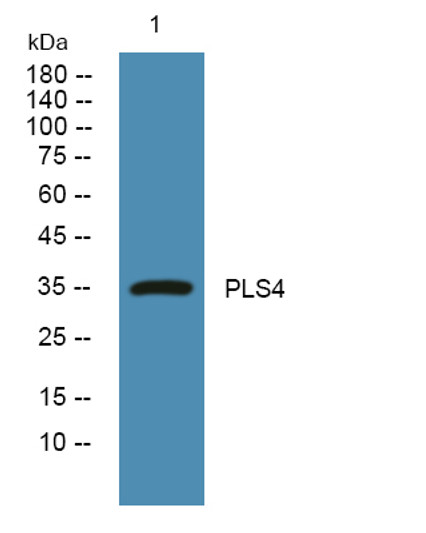| Host: | Rabbit |
| Applications: | WB/ELISA |
| Reactivity: | Human/Rat/Mouse |
| Note: | STRICTLY FOR FURTHER SCIENTIFIC RESEARCH USE ONLY (RUO). MUST NOT TO BE USED IN DIAGNOSTIC OR THERAPEUTIC APPLICATIONS. |
| Short Description : | Rabbit polyclonal antibody anti-Phospholipid scramblase 4-dependent phospholipid scramblase 4 (190-270 aa) is suitable for use in Western Blot and ELISA research applications. |
| Clonality : | Polyclonal |
| Conjugation: | Unconjugated |
| Isotype: | IgG |
| Formulation: | Liquid in PBS containing 50% Glycerol and 0.02% Sodium Azide. |
| Purification: | The antibody was affinity-purified from rabbit antiserum by affinity-chromatography using epitope-specific immunogen. |
| Concentration: | 1 mg/mL |
| Dilution Range: | WB 1:500-2000ELISA 1:5000-20000 |
| Storage Instruction: | Store at-20°C for up to 1 year from the date of receipt, and avoid repeat freeze-thaw cycles. |
| Gene Symbol: | PLSCR4 |
| Gene ID: | 57088 |
| Uniprot ID: | PLS4_HUMAN |
| Immunogen Region: | 190-270 aa |
| Specificity: | PLS4 Polyclonal Antibody detects endogenous levels of protein. |
| Immunogen: | Synthesized peptide derived from the human protein at the amino acid range 190-270 |
| Function | May mediate accelerated ATP-independent bidirectional transbilayer migration of phospholipids upon binding calcium ions that results in a loss of phospholipid asymmetry in the plasma membrane. May play a central role in the initiation of fibrin clot formation, in the activation of mast cells and in the recognition of apoptotic and injured cells by the reticuloendothelial system. |
| Protein Name | Phospholipid Scramblase 4Pl Scramblase 4Ca(2+-Dependent Phospholipid Scramblase 4Cell Growth-Inhibiting Gene 43 ProteinTra1 |
| Cellular Localisation | MembraneSingle-Pass Type Ii Membrane Protein |
| Alternative Antibody Names | Anti-Phospholipid Scramblase 4 antibodyAnti-Pl Scramblase 4 antibodyAnti-Ca(2+-Dependent Phospholipid Scramblase 4 antibodyAnti-Cell Growth-Inhibiting Gene 43 Protein antibodyAnti-Tra1 antibodyAnti-PLSCR4 antibodyAnti-GIG43 antibody |
Information sourced from Uniprot.org









